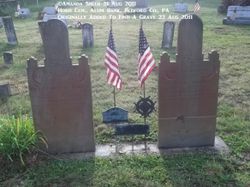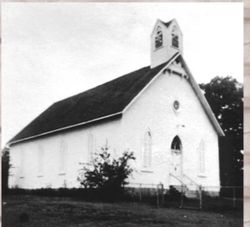Henry HORN/HORNE
SAR Patriot #:
P-184923
The following information was assembled from numerous sources and cannot be used directly as proof of Qualifying Service or Lineage.
It is considered a research aid and is intended to assist in locating sources that can be used as proof.
State of Service: PA
Qualifying Service: Private
DAR #: A058428
Birth: 15 Oct 1758 / / Germany
Death: 18 May 1845 / Bedford / PA
Qualifying Service Description:
- Private and Calvaryman, in Captain M De Kawatz, Count Pulaski's Legion
- Fought at Lancaster County, Pennsylvania, Battle of Long Island, and Monmouth
Additional References:
- Rev War Pension File # S5535
- SAR Graves Registry by Howard Franklin Horne, Jr; National Archives Washington, DC
Spouse: Elizabeth Pretzman
Children: Andrew; Daniel; Eckert; Frederick P; John;
Members Who Share This Ancestor
| Date Approved | Society | ACN | SAR Member Info | Lineage via Child | View Application Detail | |
|---|---|---|---|---|---|---|
| 1961-11-29 | NY | Unassigned | John Everett Mumper (87840) | John | ||
| 1982-05-14 | DE | Unassigned | Howard Franklyn Horne Jr. (120230) | Andrew | ||
| 1982-12-20 | CA | Unassigned | Stephen Douglas Murray (121322) | Andrew | ||
| 1984-01-24 | IL | Unassigned | Lewis William Horne (123254) | Andrew | ||
| 1989-03-07 | NC | 221377 | Gary Steven Horne (132580) | Andrew | ||
| 1989-05-07 | DE | 221376 | Howard Franklyn Horne III (132579) | Andrew | ||
| 1991-05-31 | CA | 215731 | Paul Folsom Troy (137104) | Daniel | ||
| 1991-11-08 | MA | 214409 | John Folsom Troy (137889) | Daniel | ||
| 2002-06-03 | GA | 13499 | Frederick Shannon Smith (158390) | John | ||
| 2007-03-27 | AZ | 27907 | David Brian Karr (160854) | Andrew | ||
| 2007-03-27 | CA | 27908 | Edmund Powell Karr III (160853) | Andrew | ||
| 2008-06-09 | FL | 31890 | Dennis Joel Horne (171805) | Andrew | ||
| 2010-02-26 | FL | 37952 | David Joseph Horne (176271) | Andrew | ||
| 2013-07-19 | TX | 54119 | Benjamin Allen Risher (187987) | Andrew | ||
| 2015-11-10 | AZ | 66965 | Noah Allen Risher (196866) | Andrew |
Location:
Alum Bank / Bedford / PA / USA
Find A Grave Cemetery #:
Marker Type:
Headstone
SAR Grave Dedication Date:
bef 01 Mar 2011
Comments:
- Patriot contemporary stone, upright, partially legible
- Images 1 & 2, provided with permission from Soul Warrior, Find-A-Grave contributor # 49120802
Directions to Cemetery / Gravesite:
- GPS Coordinates: 40.1767000, -78.5838000
- From US 220/99, take the exit west to Quaker Valley Road (Route 56) for 6.7 miles. Turn right onto Reed Road and continue for .8 miles to Horne Methodist Church. Cemetery is behind the church

